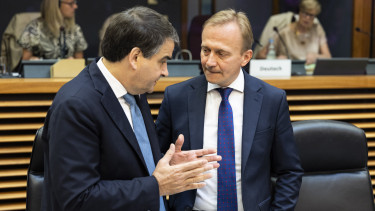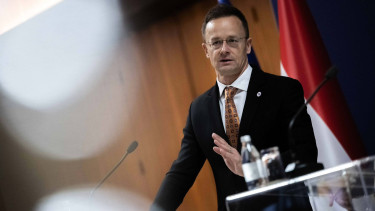Hungary to receive just 1.1% of EC's new Just Transition Fund

The European Commission has unveiled a proposal for financing its Green Deal, which targets climate neutrality by 2050. It envisions EUR 1,000 bn in green investments over the next 10 years, primarily in regions and sectors that will face the biggest challenges during the transition.
As EC officials have indicated, the EUR 1,000 bn earmarked in the Sustainable Europe Investment Plan (SEIP), the investment pillar of the Green Deal, will not in itself be sufficient to make the EU carbon neutral, as this would require investing more than EUR 300 bn in the economy each year. Brussels hopes to mobilise further investments through various administrative measures, such as changing its rules on state subsidies, as well as by introducing new fiscal regulations.
The EUR 1,000 bn figure broken down
To ensure EUR 1,000 bn worth of investments by 2030, the EU budget would allocate EUR 504 bn in non-refundable grants over the ten-year period. This would directly lead to EUR 114 bn co-financing by member states in structural funds. Over the 10 years, EUR 279 bn would come from the InvestEU program, which mobilises public and private investment using an EU budget guarantee. Another EUR 100 bn would be added by the Just Transition Mechanism, which was also introduced on Tuesday. Finally, revenue from the EU Emissions Trading System (ETS) auctions would contribute EUR 25 bn. These five items will provide a combined EUR 1,000 bn funding over ten years.
In order to ease the transition of regions and industries running coal power plants and emitting large amounts of greenhouse gases, the EC has compiled a financial package that will ensure "no one is left behind" and will generate EUR 100 bn in investment in the hotspots over the next seven years, during the 2021-2027 budget cycle.
The Just Transition Mechanism (JTM) will rely on three pillars and is expected to mobilise EUR 100 to 125 bn worth of investments in the 108 most affected European regions over the next seven years through the use of relatively limited EU funding.
1.) The first pillar is the Just Transition Fund itself, which aims to generate between EUR 30 bn and EUR 50 bn over the next seven years. This would entail EUR 7.5 bn of fresh EU funds from the long-term budget, increasing the MFF by a like amount, even though the current proposal of member states paying 1.114% of GNI has been rejected by several countries. This extra funding would increase required payments by about 0.1 percentage point to 1.21%.
EC sources have indicated that the entire Green Deal hinges on this. "The May 2018 proposal is the reference point. Any substantial cuts to the MFF would put the Sustainable Europe Investment Plan at risk," a high-ranking official who wished to remain anonymous said.
Hungary would receive EUR 82.2 mn of the EUR 7.5 bn, or 1.1% of the total. Poland, which produces 80% of its power using coal, will receive EUR 2 bn, followed by Germany with more than EUR 1 bn. Other major beneficiaries include Romania (EUR 662 mn) and the Czech Republic (EUR 644 mn).
2.) The second pillar is a dedicated just transition scheme under InvestEU to mobilise up to EUR 45 bn of investments. It will seek to attract private investments, including in sustainable energy and transport that benefit those regions and help their economies find new sources of growth, with an EUR 1.8 bn budget guarantee and the participation of the EIB.
3.) The third pillar will be a EUR 10 bn public sector loan facility with the European Investment Bank backed by the EU budget to mobilise between EUR 25 and EUR 30 bn of investments. It will be used for loans to the public sector, for instance for investments in district heating networks and renovation of buildings.
Cover photo: Shutterstock











